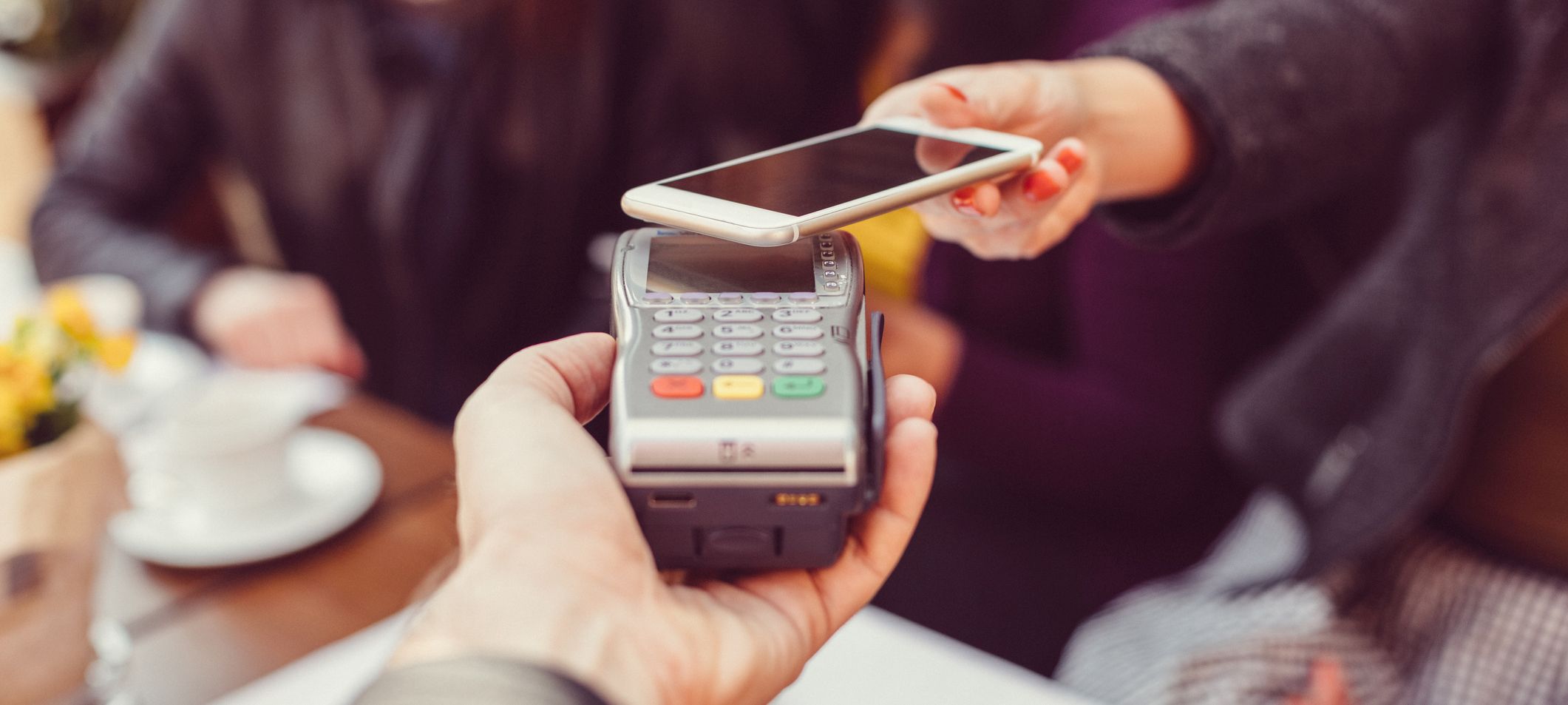Digital wallets are growing in popularity as a way to pay for products and services. You can use a digital wallet platform online or even from your phone. But how do digital wallets work? And how do they keep your credit card information safe? The answer is through a process called tokenization. Here’s what we’ll discuss in this blog:
- What is tokenization?
- Tokenization vs. encryption
- How do digital wallets work?
- Benefits of digital wallets and tokenization
Let’s take a look at mobile payment tokenization and digital wallet security features when you make payments with your phone or online.
What is tokenization?
What makes a digital wallet platform work securely is the process of tokenization. Mobile payment tokenization is a process that involves turning your credit card information — including your account number, expiration date and security code — into a string of random numbers and letters. This string of numbers and letters is called a token.
When you use your digital wallet to make a payment, the token takes the place of your personal credit card information. Anyone attempting to steal the information wouldn’t be able to see your real credit card information, so they couldn’t copy your card.
Tokenization is often used when a digital wallet platform is involved. This can include situations like when you save your credit card information on a website for easy payment later or when you add your credit or debit card to a digital wallet app or other apps on your smartphone.
Tokenization vs. Encryption
It’s important to note that mobile payment tokenization is different from encryption. With encryption, the information is encoded and sent over a network. At the other end, the information is decoded.
While encryption can enhance security, the information is still there — and encryption can be cracked. It’s possible for someone to reverse-engineer your information and access it, even if it’s been encrypted.
With tokenization, only the issuer or payment processor can unlock the token. So no matter who else sees the token as it travels around the web or is carried about on your phone’s digital wallet, it’s meaningless.
How do digital wallets work?
With the help of tokenization, a digital wallet platform can make it easy for you to use your credit card to make payments — without the need for a physical card.
When you activate the digital wallet on your mobile device, you’ll upload your credit or debit card information to the digital wallet app, then it will be replaced by a token.
Digital wallets communicate with online retailers or special readers in brick-and-mortar stores to provide your token. Once the token is verified, payment is processed. The store never receives your actual card information, so it’s never stored in the database.
Where else is tokenization used?
This works on e-commerce websites, as well. Instead of storing your credit card information, a token is generated that represents the card. So, if there’s a data breach, no one gets your card number. Instead, all they see are the generated tokens.
And, because it’s possible for each retailer or digital wallet platform to have its own token, that token can be disabled and you may not have to request a replacement credit card.
Benefits of digital wallets and tokenization
Mobile payment tokenization comes with a number of benefits that can ease a variety of transactions.
- Convenience: There’s no need to carry cash or a wallet when you can use your digital wallet on your phone. You can even connect it to wearable devices, like your digital watch, and then hold the device over a compatible reader to pay.
- Security: Because mobile wallets use tokenization, you don’t have to worry about your credit card information being exposed. Plus, you can leave your wallet at home, so you don’t have to worry about your physical cards being stolen.
- Easy to use: When you use your digital wallet at a store, near-field communication (NFC) technology connects to the reader and information — like your token — is exchanged. You don’t need to do anything special, just pull out your phone and use the digital wallet app. In many cases, just being near the reader will automatically bring up your wallet, so you don’t have to look for it on your phone.
- No need to remember the information: Even when shopping online, tokenization can be useful. When you save your information with an online site, tokenization makes it so you can buy with one click, rather than getting out the card every time or remembering the information.
For those looking for an easy and secure way to pay, digital wallets and tokenization may be the perfect fit.
Bottom line
Mobile payment tokenization is becoming increasingly widespread as a way to improve secure payment methods. With the help of tokenization, it’s possible to quickly and easily pay with your phone, or save your payment information online without actually revealing credit card numbers and other sensitive information.
Because tokenization obscures payment information, it’s harder for would-be fraudsters to replicate your card or use your card number for illicit transactions. On top of that, with unique tokens issued, it’s possible to disable a token stored at a retailer without the need to re-issue a credit card or change the card number. This can make it easier to manage your money in the event a retailer experiences a data breach.
SouthEast Bank supports digital wallets, including Apple Pay, Google Pay, and Samsung Pay. Click here for details about activating and using your digital wallet.
Note: Links to other websites or references to services or applications are provided as a convenience only. A link does not imply SouthEast Bank’s sponsorship or approval of any other site, service or application. SouthEast Bank does not control the content of these sites, services or applications.
Information contained in this blog is for educational and informational purposes only. Nothing contained in this blog should be construed as legal or tax advice. An attorney or tax advisor should be consulted for advice on specific issues.




